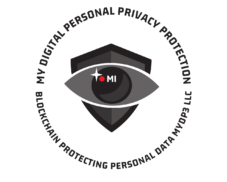The Need For A Digital Identity
Advances in the digital world are coming at us in a frenetic rate. Social media, email, online applications and retail have taken away much of our anonymity, rendering near impossible the ability to perform tasks anonymously. As the number and variety of applications expands, it is becoming harder than ever to withhold information we wish would not be shared. So some have used different aliases to disguise our identity when we wish to share information without divulging our true identity.
The goal of this project is to provide a method or means of securing our personally identifiable information while still interacting wholly in the information world. The personal information we share with others is totally up to us. We are the owners of our personal information and therefore, maybe with the exception of a court order, have the right to divulge or conceal our personal data.
Related to this, I want to ensure that information I obtain is from a sentient human being, and not some chatbot, AI application, or bad actor. If something comes across in my social media account, or my subscription services, then I want to know if the information is coming from a source I can be certain has fingers typing on a keyboard or a speech recognition service.
Finally, and this is probably most important, I don’t want my personal information shared beyond those I am directly interacting with, period. Just because I shopped on your website it doesn’t necessarily imply that I want you to share that information with any third party. Just a few years ago, I could walk into a grocery store, purchase a wonderful cut of meat, and pay cash for it and, unless I was personally known to the proprietor, they would not have known who purchased the meat. Same with guns, ammunition, books, toys, computers, etc. I walk in, select my item, pay cash and no one was the wiser.
As time progressed, I started using a debit or credit card, which had my name on it, to make that purchase. That proprietor had now obtained enough information to monetize that transaction. They could sell my name to a third party that may had a marketing mix associated item. Worse, they stored that information and may not have taken all the safeguards necessary to protect it. We went further and started joining loyalty programs offered by vendors. They captured more and more data, and were sharing that information even if we were unsuspecting about their intent. “It’s in the fine print.”
Today, these vendors, librarians, clubs, etc. are even willing to share the information they collected with government agencies, as it may be deemed terroristic that I purchased a new Bible from Barnes and Nobles. What happened to the days when I could pick up a copy and could have done so anonymously?
Anonymity should be sacrosanct unless a judge in good standing deems otherwise, and it should only be a judge. If you are a citizen of a country, you have not violated any law of that country, and the entity you are transacting with is also in good standing, you should not have to provide any personally identifying information to anyone outside that transaction. Similarly, the entity you are transacting with should not benefit from that interaction without your consent. If they wish to benefit from that interaction, they should be willing to provide you with a percentage of the proceeds.
The goals of this project is to provide a method to protect your personal privacy while operating within the digital, online world. It is also to protect those with whom we interact, whether it is an exchange between 2 individuals or a broadcast to the public at large. Our interactions take many forms, from a simple exchanges of views between people, purchase or trade of products or services, to complex contracts to support commerce and governmental services. Ultimately, the solution will need to capture everything as a contract, immutable, between the direct parties. The public will only be able to “see” the pertinent content of the exchange as necessary by law.
Under separate articles, I will explain the key components of the project, related software supporting those components, and seek your comments, concerns, suggestions in support of creating an application that will ensure your digital personal privacy protection is ensured.
